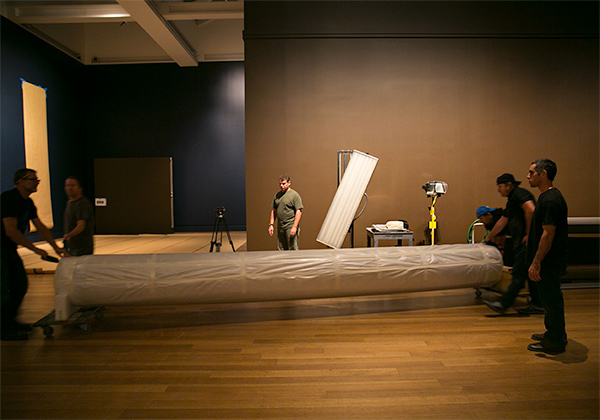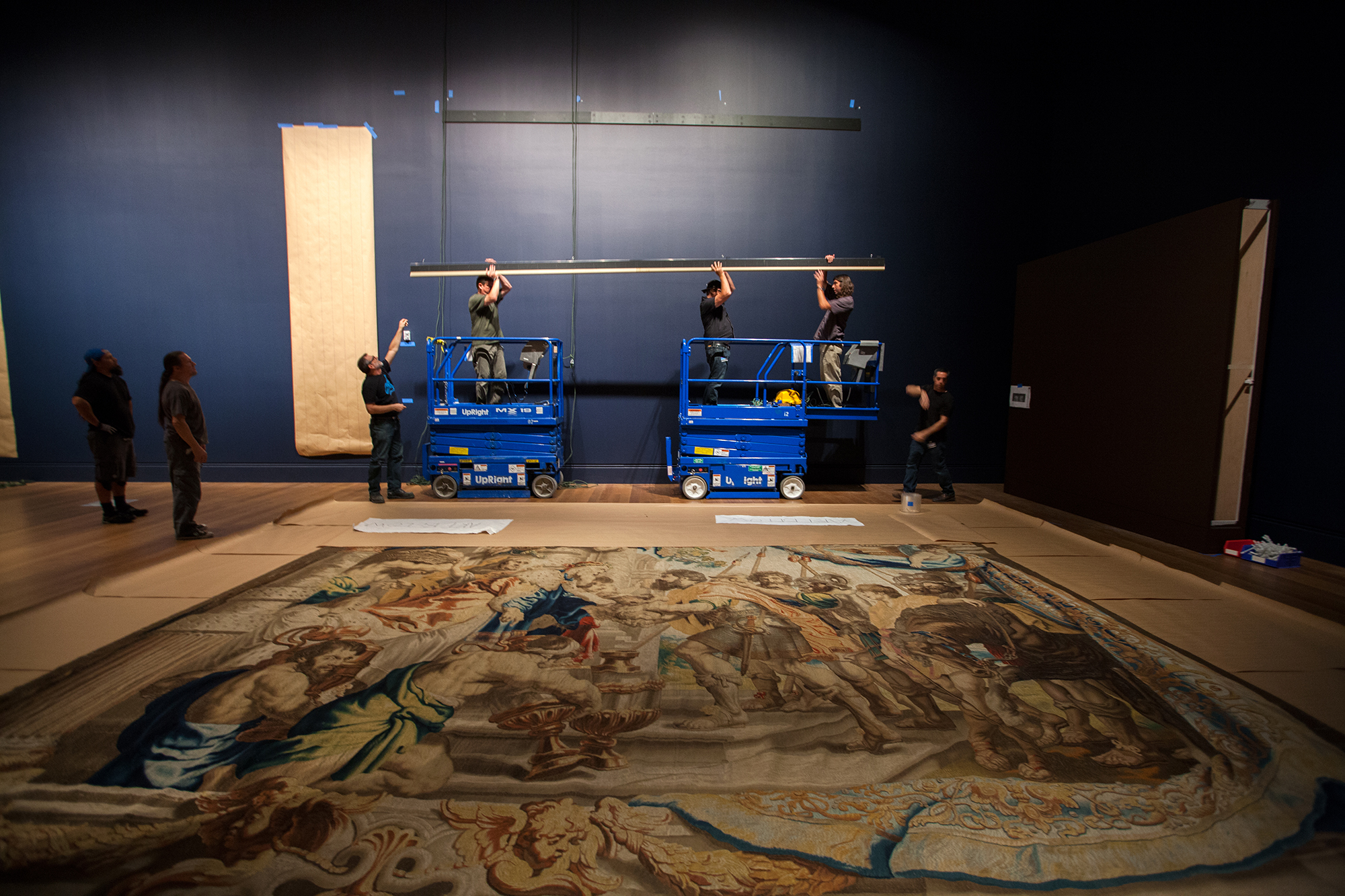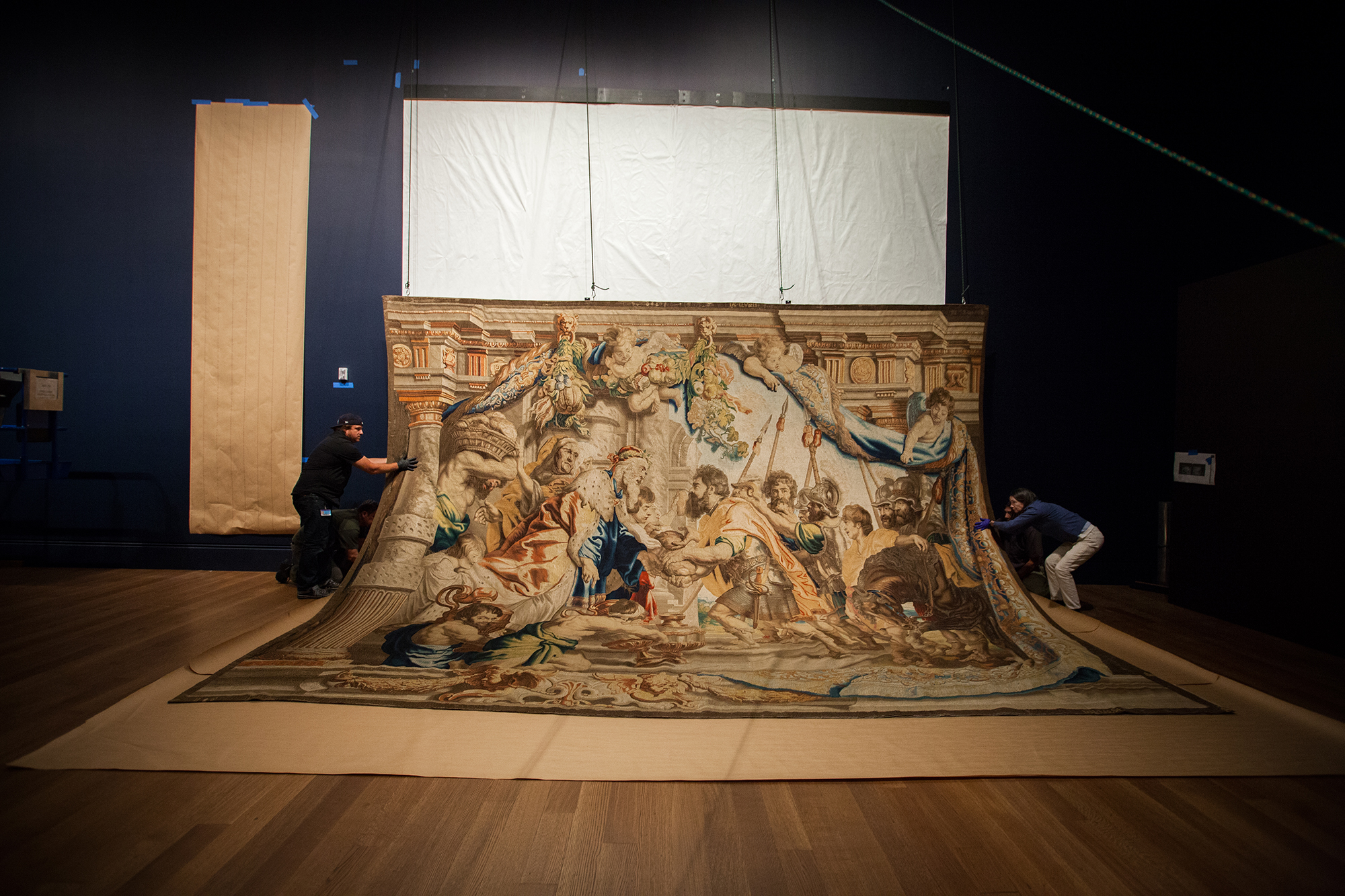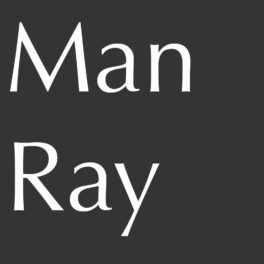In the early 1620s Peter Paul Rubens designed a series of tapestries celebrating the glory of the Roman Catholic Church. On loan from the Patrimonio Nacional, four of these monumental treasures have traveled from Madrid to L.A. for the exhibition Spectacular Rubens: Triumph of the Eucharist. They are paired with oil sketches from the Prado Museum, which are Rubens’s designs for the compositions. Both the paintings and the tapestries offer a rare spectacle of Baroque compositional might and technical prowess.
Measuring about 16 feet on the vertical side, up to about 25 feet on the horizontal and weighing 150 to 200 pounds each, the 400-year-old wool-and-silk weavings were carefully moved, unrolled, and hung by a team of 20 experts, including Getty preparators, curators, and conservators, as well as a curator from the Patrimonio Nacional. Hardware and pulley rope—along with a careful eye, muscles, and nerves of steel—were needed to painstakingly move the tapestries off their secure rollers and onto the deep blue gallery walls, where they will hang until January 11, 2015.
Spectacular Tapestry
130,000: Cost in florins to weave a single Rubens tapestry
5,814: Miles traveled from Madrid to L.A.
1,288: Square feet of woven wonder on view
100: Feet of pulley rope needed to hang
90+: Colored wool and silk wefts per inch
44: Wool warps per inch (approximate)
16-24: Artisans needed to create each tapestry
82: Feet of Velcro securing all four tapestries in the show
78: Days on view at the Getty
20: Experts needed to install
8: Days to hang the entire exhibition
2: Pairs of tweezers used by conservators to remove stray fibers
1: Day to install each tapestry
0: Times these tapestries will return to L.A.
Here’s a glimpse into what it took to install just one single tapestry.

The tapestry, which is rolled over a sturdy but lightweight tube for easier handling, is maneuvered into the gallery on dolleys. The tapestry pictured here and below is The Meeting of Abraham and Melchizedek, 1626–33, woven by Jan Raes I, Hans Vervoert, and Jacob Fobert after designs by Peter Paul Rubens. Wool and silk, 192 15/16 x 236 1/4 in. Patrimonio Nacional, Monasterio de las Descalzas Reales, Madrid. Tapestry Copyright © Patrimonio Nacional

The tapestry is slowly unrolled while conservators check for (and remove) hairs and foreign threads.

Once unrolled, the tapestry is carefully measured and re-measured in preparation for hanging.

The preps (art preparations) team works hard to install the receiving cleat on the wall at the proper height, about 18 feet from the floor, and check the fit of the long poplar hanging board covered in Velcro.

A closeup of the Velcro-covered hanging board before its attachment to the back of the tapestry and insertion into the cleat on the wall

Velcro runs along the back of the tapestry along the length of the top edge. The Velcro is gently patted into place along the hanging board.

Ropes are attached to eye bolts along the top of the hanging board…

…and used to hoist the hanging board up to meet the wall-mounted cleat.

Almost there.

After the tapestry is hoisted into position, preps remove the ropes and eye bolts and secure the hanging board to the wall. Beautiful!

Congrats, team!




Does this marvelous exhibit travel to the East Coast??